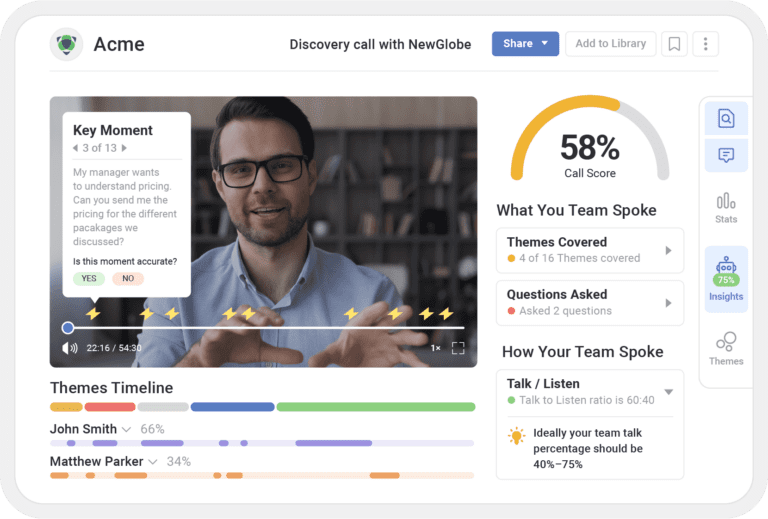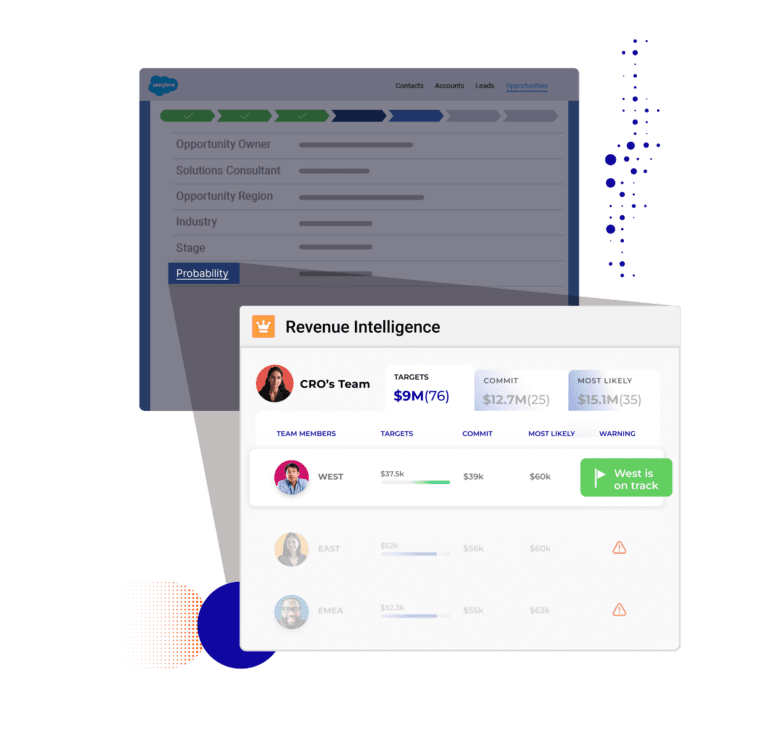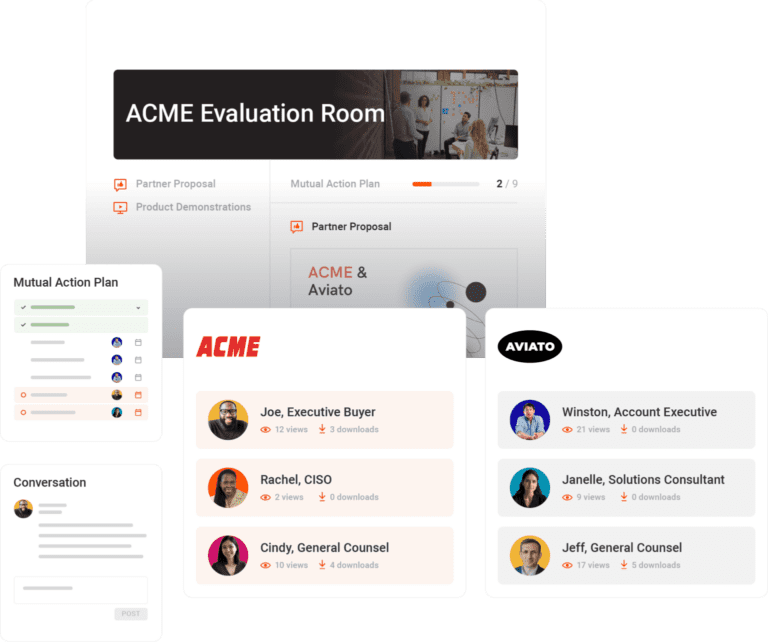We live in the age of data. But, as it has been said, “Data is like garbage. You’d better know what you will do with it before you collect it.” This is especially true in sales; no metric is used or tracked as much as the win or conversion rates.
Despite its importance, many businesses struggle with low conversion rates and cannot explain where they are going wrong.
In this blog post, we’ll explore the reasons behind low conversion rates and provide actionable strategies to boost your win rates.
What is the sales conversion rate, and why is it important?
Sales conversion rate refers to the percentage of prospects who convert into customers or take a desired action. It is a key performance indicator for sales teams and representatives, offering insights into the effectiveness of their sales efforts and the overall health of the business. Typically, 40-50% conversion rates are considered the standard in B2B.
prospects and driving desired outcomes. It signifies efficient lead nurturing, effective sales pitches, and successful closing techniques.
Conversely, low conversion rates suggest gaps in the sales process, pipeline quality, or sales reps’ execution quality.
There could be many reasons behind low conversion rates:
Failing to understand your target audience’s needs, pain points, and preferences can lead to misaligned sales strategies and low conversion rates.
A disjointed or inefficient sales process can cause prospects to drop off at various stages of the buyer’s journey, resulting in low conversion rates.
If your product or service lacks a compelling value proposition or fails to communicate its benefits effectively, prospects may be reluctant to purchase.
Trust is essential in the sales process. If prospects don’t trust your brand or sales reps, they won’t convert.
The sales team’s ability to establish rapport with the customer is sometimes as important as the product and brand quality.
Neglecting to address objections or concerns raised by prospects can undermine trust and confidence in your offering, leading to lost sales opportunities.
Long story short, there could be multiple reasons and checkpoints why your quota attainment and conversion rates slip.
How to calculate sales conversion rates?
While there are many variations of the sales conversion rate, typically, companies look at only eligible opportunities as the starting point and then see how many of those are converting into customers:
What constitutes a genuine opportunity can vary from company to company. Typically, most companies mark an opportunity once an initial meeting with the prospect has taken place, the sales rep has done their discovery and qualified the prospect as genuinely looking to purchase something in the immediate future.
For some companies, this can happen over a simple phone call, while for others, it might take multiple meetings, depending on the complexity of their offering and the typical sales cycle in their industry.
The sales cycle also plays an important role in determining the frequency at which win rates must be measured. This and the degree of change in the industry dynamics are good indicators to determine the sales conversion rate calculation cadence. A longer sales cycle of 3-6 months means there would be significant data to calculate win rates only monthly or quarterly. But, if the industry is undergoing dramatic shifts or the sales cycle is less than a month, it makes sense to have weekly or biweekly tracking.
How can you boost your sales conversion rates?
Here are four ways to start boosting your win rate:
Know your audience inside out
Invest time in understanding your target audience’s demographics, preferences, pain points, and buying behaviors. Tailor your sales approach to resonate with their specific needs and motivations.
Having a strong conversation intelligence tool to track what’s working v/s what’s not and identify key trends across customer conversations is critical for any successful sales team


However, a CI tool alone is never enough; it needs to be paired with strong training, coaching, and role-play abilities to ensure the insights coming through the tool are inculcated throughout the GTM team. This is where Mindtickle’s consolidated offering plays a major role in ensuring the success of your GTM teams.
Streamline your sales process
Map out your sales process from start to finish, identifying potential bottlenecks or areas for improvement. Minimize friction and ensure a smooth customer journey from initial contact to conversion. This requires regular monitoring of how deals play out, which can only be achieved through a tightly integrated revenue and conversation intelligence product. Mindtickle’s revenue intelligence ties the training on the platform with how well the sales process is being followed on the ground.


Craft a compelling value proposition and address objections proactively
Clearly articulate your product or service’s unique value proposition. What sets you apart from the competition? How will your offering better solve your customers’ problems or fulfill their desires than alternatives?
This requires a strong understanding of your product and the ability to engage with the customer effectively. A strong content management offering paired with a Digital Sales Room can ensure that the right messaging is delivered to the customer in a highly customized and engaging manner, with everything placed in a single location to help discovery and tracking.


Continuously measure and iterate
Monitor your sales performance metrics closely and identify areas for improvement. This requires a strong data-driven sales process that constantly monitors deals and rep performance. This can be done only if all your data flows across your sales tech stack, and you can link reps’ skills with their performance on the ground.
Making it a reality at your org
Boosting sales conversion rates requires strategic planning, customer-centricity, and continuous improvement. By driving effective sales enablement and implementing targeted strategies to enhance your sales process, you can make sure all your reps are ready to close deals. Remember, improving conversion rates is an ongoing pursuit, so stay vigilant, adapt to feedback, and keep improving and optimizing your sales process.
Boost Win Rates with Mindtickle
Are you ready to elevate your sales game and boost your win rates?
Get Your Personalized Demo






